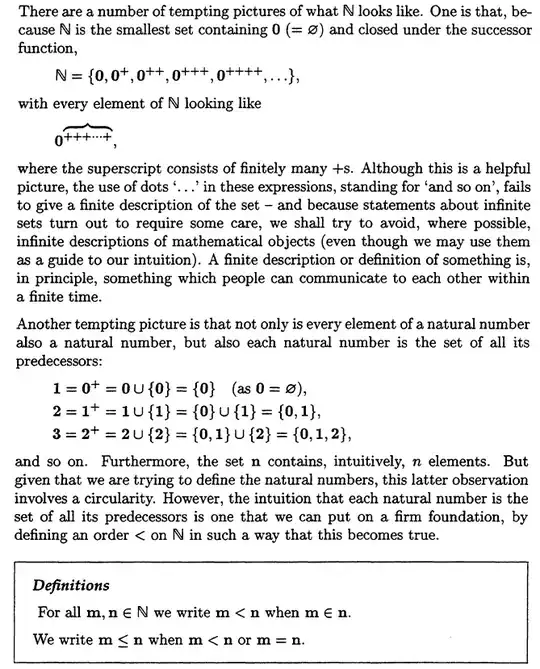Below is taken from page 41 of the book Classic Set Theory.
The set of natural numbers is defined as the smallest inductive set.
How do I show that each natural number is the set of all its predecessors, for example $10=\{0,1,2,3,4,5,6,7,8,9\}$ and why does this observation "the set $n$ contains intuitively, $n$ elements" involves a circularity?
